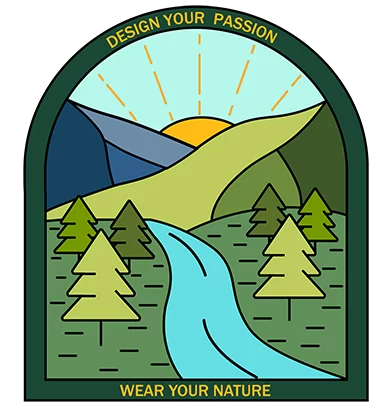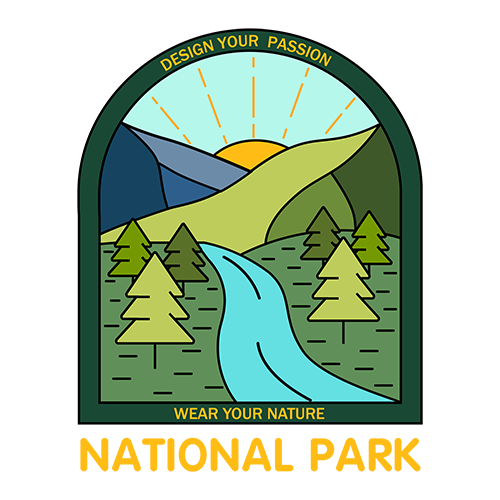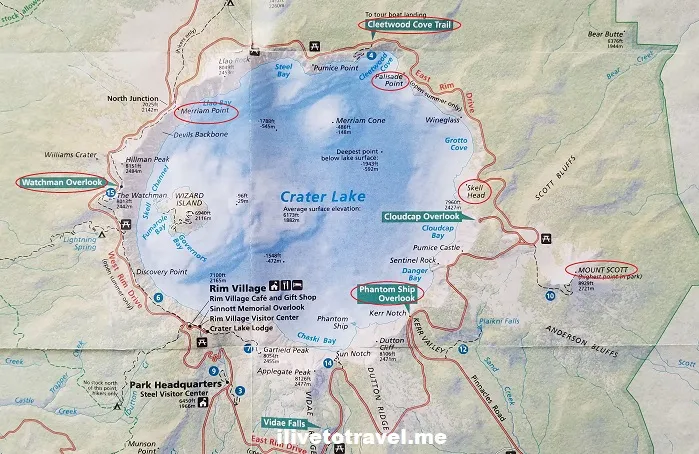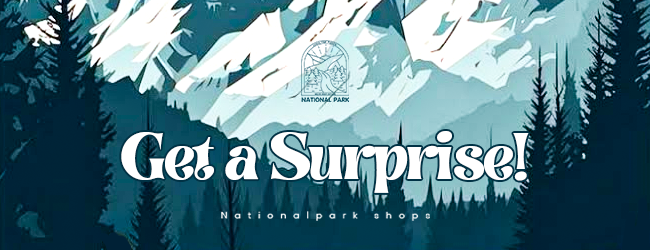Crater Lake National Park
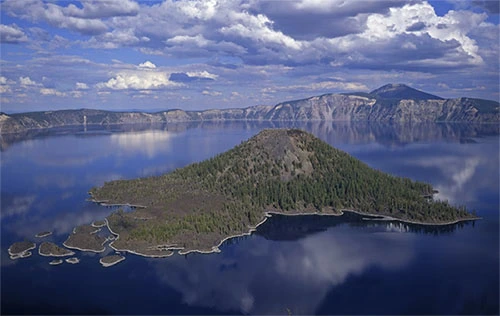
Crater Lake National Park Overview
Located in the Cascade Mountains of Southern Oregon, Crater Lake National Park is home to the deepest lake in the United States and the seventh deepest in the world. The lake, which is 1,943 feet deep, was formed inside a volcanic basin when Mount Mazama collapsed due to a massive eruption 7,700 years ago. Filled mostly by snowfall, the lake is renowned for its exceptional clarity.
Encompassing 183,224 acres of mountains, peaks, forests, and the lake itself, Crater Lake National Park offers diverse habitats for various wildlife species. The park’s varying elevations create an ideal outdoor environment for research and education.
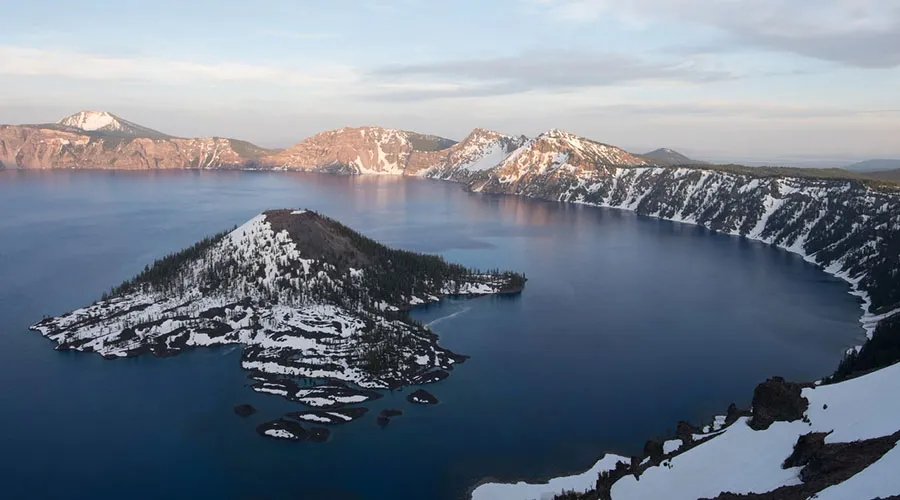
Things to do in Crater Lake National Park
Crater Lake National Park offers a wealth of activities and experiences for visitors to explore and enjoy. From hiking trails that wind through the stunning landscapes to ranger-led programs that delve into the park’s rich history and ecology, there is something for everyone to discover.
Hiking Trails
Crater Lake National Park is a hiker’s paradise, with a vast network of trails that offer breathtaking views and the opportunity to immerse oneself in the park’s natural beauty. Some popular trails at Crater Lake National Park include:
Rim Trail
Garfield Peak Trail
Cleetwood Cove Trail
Mount Scott Trail
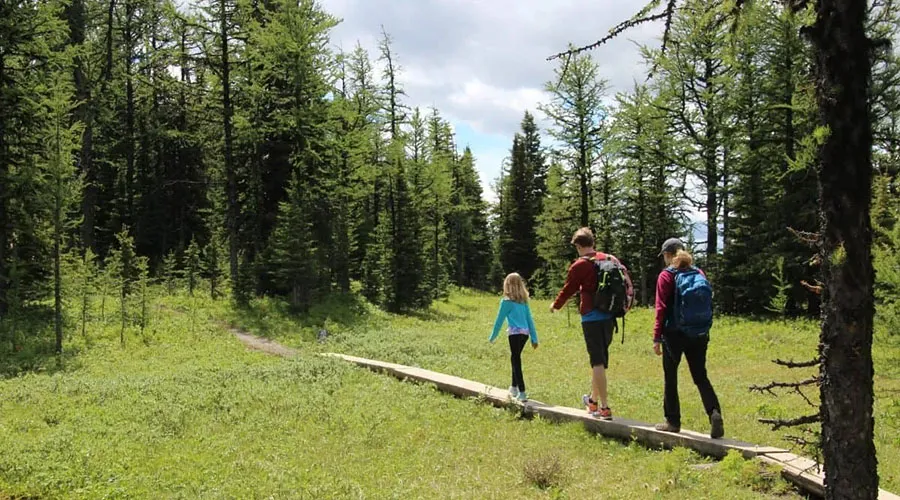
Ranger Program
Most ranger programs typically start in late June and run until mid-September. Rangers give brief talks on different topics at the Sinnott Memorial Overlook in Rim Village. In the late afternoon, talks are held at Crater Lake Lodge either on the patio overlooking the lake or indoors near the fireplace.
Evening programs play a significant role in the national park experience and have become a tradition for many visitors. Night sky programs are available throughout the summer. Ranger-led hikes can be arranged at various spots.
Ranger-guided snowshoe walks are usually offered from late November to the end of April. No prior snowshoeing experience is required, and snowshoes are provided free of charge along with the guided walk. Apart from the park entry fee, there is no additional cost.

Fishing
There is no proof that native fish ever existed in Crater Lake. However, from 1888 to 1941, the lake was filled with seven different types of fish, but only two of them are doing well today. It is estimated that around 60,000 kokanee salmon and rainbow trout currently live in the lake.
All streams in the park are open for fishing except Sun Creek and Lost Creek. These two creeks are off-limits because they are home to native bull trout (Salvelinus confluentus). The park is working on a project to bring back a stable population of bull trout, which are the only fish naturally found in the streams of Crater Lake National Park. Bull trout are at risk and are safeguarded by the Endangered Species Act.
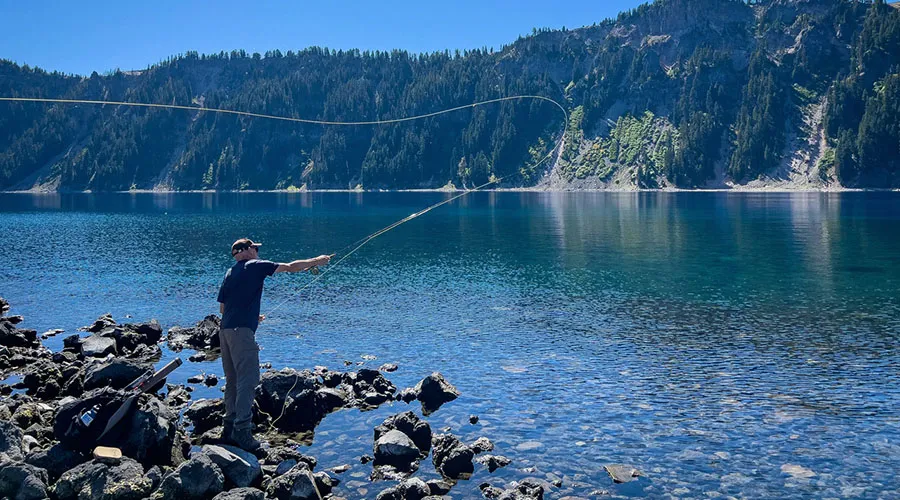
Head to the Shore for a Boat Tour
Boat tours of Crater Lake are popular activities in the park, offering unique views and experiences. Available from July to mid-September, these tours provide only legal access to the lake. Choose from three options: a two-hour cruise with historical background, a day-long tour with a stop at Wizard Island, or a shuttle boat ride directly to Wizard Island.
The hike to the lakeshore is about 1.1 miles each way with elevation change, not wheelchair accessible, and no shuttles available. Consider your physical abilities before making descent, but benches along the way offer breaks and scenic views.
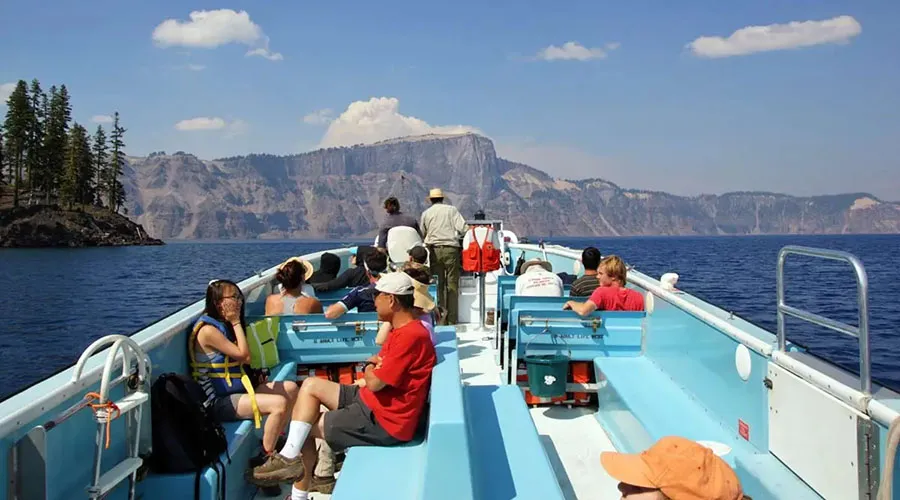
Scenic Rim Drive
The Rim Drive, a historic route, spans 33 miles (53 km) and offers stunning views of the lake, panoramic vistas, forests, and meadows. The road’s design seamlessly blends with the natural surroundings, allowing it to blend in with the landscape when viewed from across the lake.
There are 30 overlooks along the drive, each with plenty of parking space, where visitors can stop to admire the lake and caldera. Additionally, Rim Drive grants access to five picnic areas, hiking trails of different levels of difficulty, unique geological formations, and numerous waterfalls.
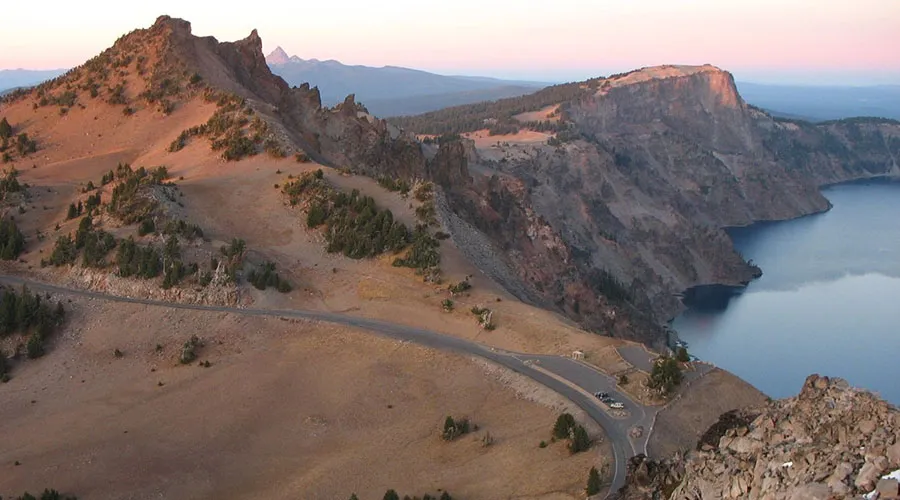
Rim Village Walking Tour
Rim Village, a historic area, was added to the National Register of Historic Places in 1997. The Rim Village Promenade, outlined by a native stone parapet wall with three observation bays, runs along the caldera rim for a third of a mile. It acts as a pedestrian guide through the village and is dog-friendly.
The architectural design of Rim Village was influenced by nature and art, incorporating rustic features made from native stone and logs. Walkways were designed to complement natural plantings, and drinking fountains crafted from native boulders used to adorn the promenade, although only one remains functional today.
Kiser Studio, now the Rim Visitor Center and Crater Lake Natural History Association Bookstore, is located in the heart of the promenade. Rangers are on hand to provide information about the history of Rim Village and can help orient visitors.
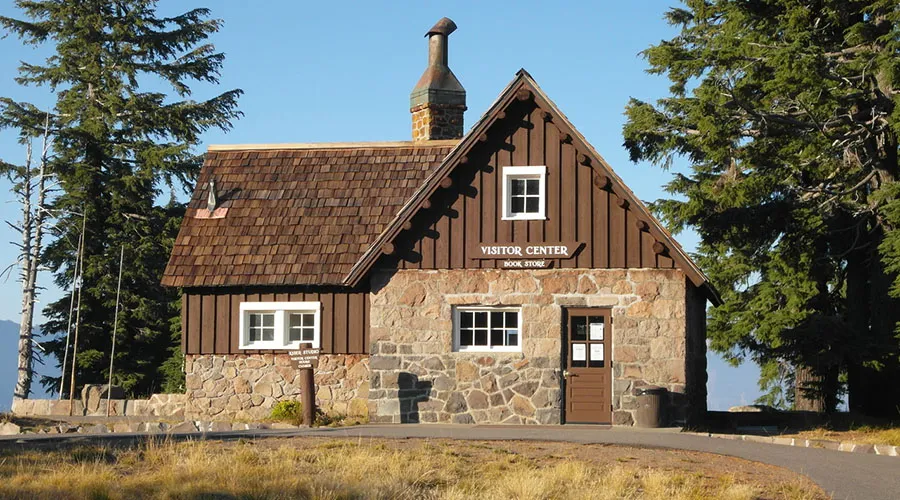
Sinnott Memorial
The Sinnott Memorial Overlook is the most popular viewpoint in the park, offering stunning views of Crater Lake and connecting visitors to its geologic history. Inside the memorial, visitors can explore exhibits about Mount Mazama’s eruption, influential scientists, indigenous connections, and local ashfalls. The memorial is open from late June to mid-October, with varying hours throughout the summer.
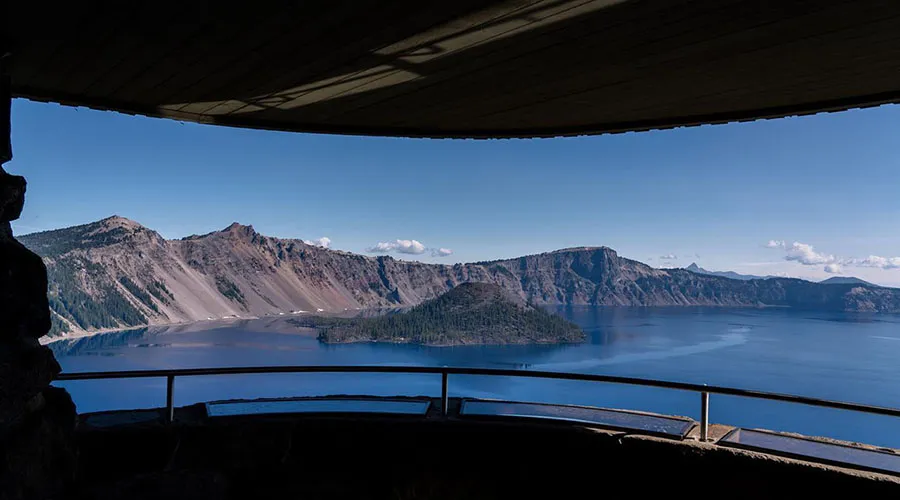
Walk to the Base of Plaikni Falls
Hidden within the rough terrain of the park, Plaikni Falls is a secret treasure where visitors can witness the impact of Crater Lake’s volcanic scenery. The hike to reach the base of Plaikni Falls is a moderate 2.2-mile round trip journey that guides hikers through a lush, wooded area. Along the path, hikers can enjoy breathtaking views of the nearby peaks and have the chance to observe the park’s various wildlife.
Upon reaching the end of the trail, visitors are treated to the impressive sight of the 129-foot Plaikni Falls, a tranquil yet forceful waterfall flowing over volcanic rocks. This hike provides an excellent opportunity to immerse oneself in the park’s natural beauty and variety, away from the crowds found at more popular viewpoints.
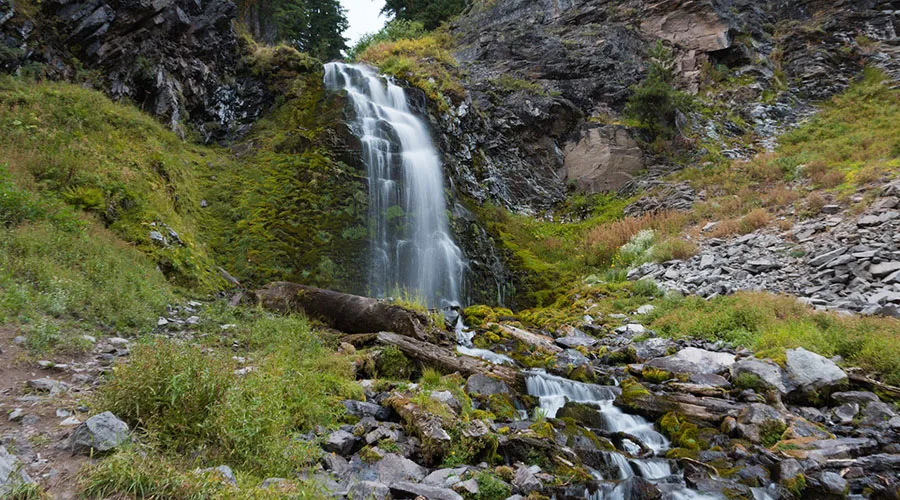
Catch a Sunrise and Sunset
During the early morning, you can witness the beautiful sunrise at Discovery Point, where you can see the rugged rim and the lake below, or at Cloudcap Overlook, which offers expansive views of the landscape and ideal lighting for photography.
In the afternoon, you may want to watch the sunset from Rim Village or the top of Watchman Peak. During summer, park rangers often lead sunset hikes along the 16-mile roundtrip trail to the summit, where you can enjoy panoramic views next to a historic fire lookout.

Enjoying Winter
During each winter season, Park Headquarters documents approximately 40 feet of snowfall annually, mostly occurring from November to April. This transforms Crater Lake into a magical winter landscape where tourists can enjoy the view of snow-covered Wizard Island from Rim Village, engage in activities like snowmobiling on North Entrance Road, and explore designated and undeveloped trails near the rim of Crater Lake for snowshoeing and snowmobiling.
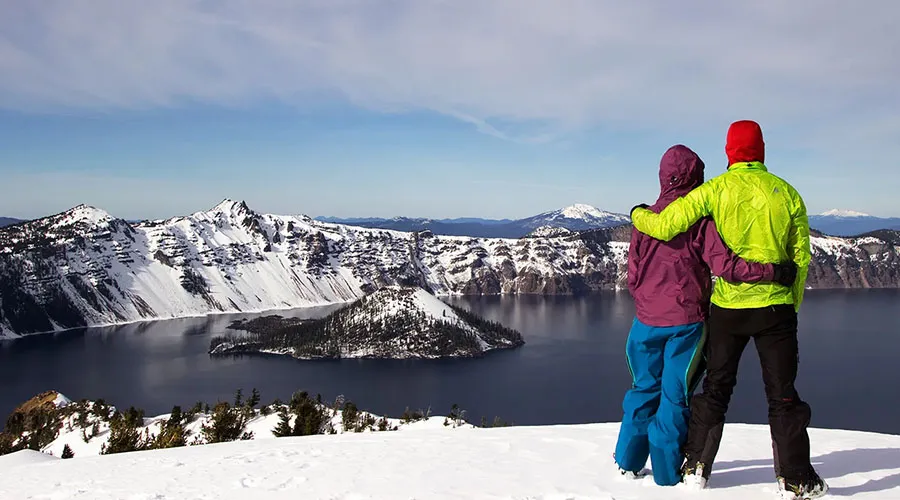
Places to stay in Crater Lake National Park
Crater Lake National Park offers a variety of accommodations to suit the needs of different types of travelers, from camping in the park’s wilderness to staying in historic lodges and resorts.
Camping
More than 95% of the park is designated as wilderness. While some areas are off-limits for backcountry camping, visitors can still enjoy exploring the park’s ancient forests and volcanic scenery.
An overnight backcountry camping permit is mandatory throughout the year for all trips in the park. Day hikers do not need permits but must follow all backcountry rules.
Permits can only be acquired in person at the Ranger Station in Park Headquarters during operating hours. They cannot be obtained over the phone or more than one day in advance.
Areas often chosen by tourists to camp overnight include:
Summer Backcountry Camping
Winter Backcountry Camping
Pacific Crest Trail
Frequently Asked Questions & Regulations
Weather & Climate
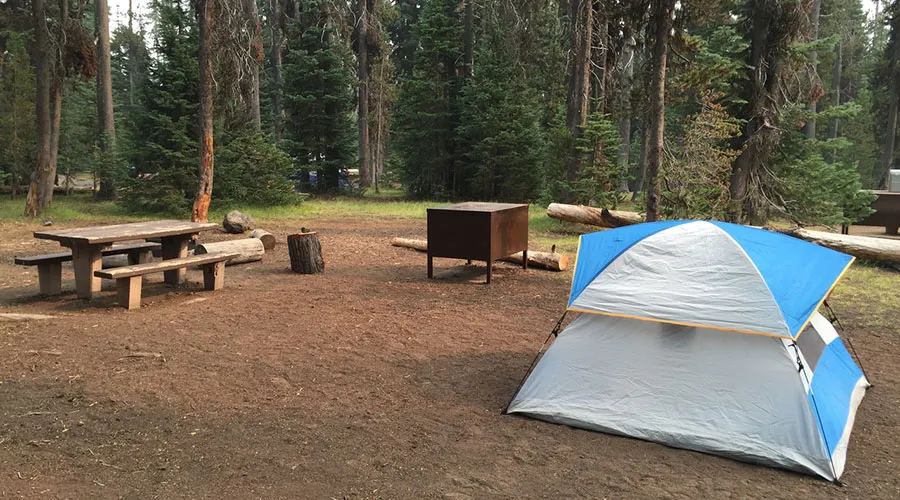
Hotel and Resort
For those seeking a more comfortable and amenity-rich experience, Crater Lake National Park offers several historic lodges and resorts.
Crater Lake Lodge (2-star)
Constructed on the rim of the caldera, almost 1000 feet above Crater Lake, the iconic Crater Lake Lodge is nestled amidst subalpine meadows and forests. Originally established in 1915, it underwent reconstruction and earthquake-proofing in 1995. Operating under the management of ExplorCraterLake, the lodge usually welcomes guests from mid-May to early October.
Featuring a total of 71 rooms, including six that are wheelchair accessible, the lodge offers various accommodations. Some rooms provide stunning views of the lake, while others overlook Rim Village or the picturesque surroundings.
- Address: Crater Lake National Park, 570 Rim Village Dr, Oregon 97604, United States
- Price Range: From $94 – $249/night depending on the season and demand
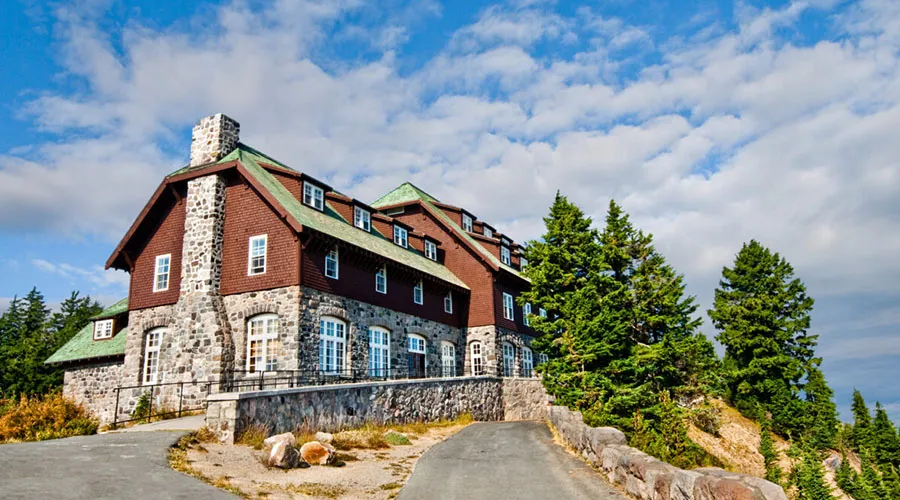
The Cabins at Mazama Village
The Cabins at Mazama Village are situated in a mature forest of lodgepole pines. The exterior has a rustic style but inside, it has a more contemporary inn-like atmosphere. There are 10 cabins, each with 4 private rooms, totaling 40 rooms. Nearby in the village, there is a campground, amphitheater, cafe, and camp store.
Mazama Village can be easily reached via Highway 62 from either the West or South Entrance or it is located 7 miles south of Rim Village. Normally, the operating season is from late May to September, but sometimes the opening may be delayed due to weather conditions and snow levels.
- Address: 1211 Avenue C, Crater Lake National Park, OR 97503-1085
- Price Range: From $175/per cabin/night depending on the season and demand
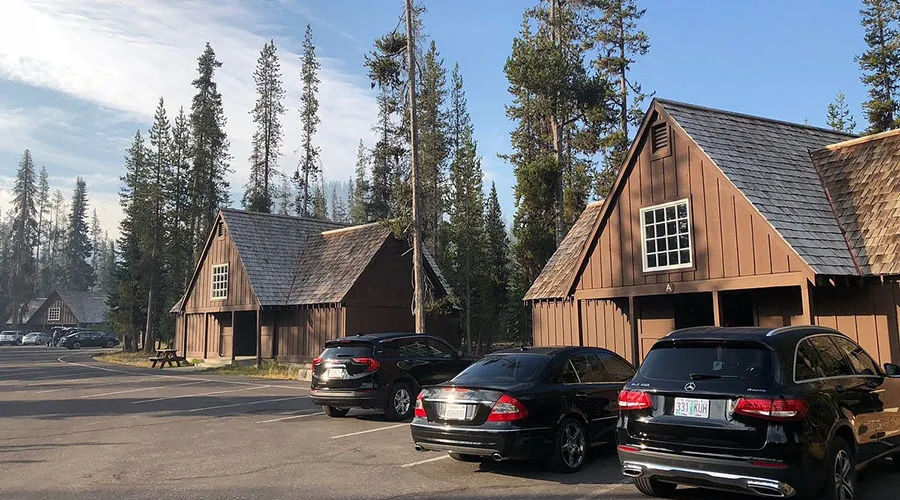
Union Creek Resort
Union Creek Resort is a rustic cabin retreat that takes you back to a more uncomplicated time. Nestled in the Rogue River National Forest, the resort features a charming lodge surrounded by majestic Douglas Firs. It’s the perfect spot to enjoy Oregon’s beautiful outdoors in cozy, modernized cabins. The air is filled with the scent of pine needles and the soothing sounds of birds and flowing creek waters. The picturesque setting includes Union Creek and the scenic Rogue River, as well as hiking trails through ancient forests with towering 700-year-old Douglas Firs.
- Address: 56484 Ore. 62, Prospect, OR 97536
- Price Range: From $112/night depending on the season and demand
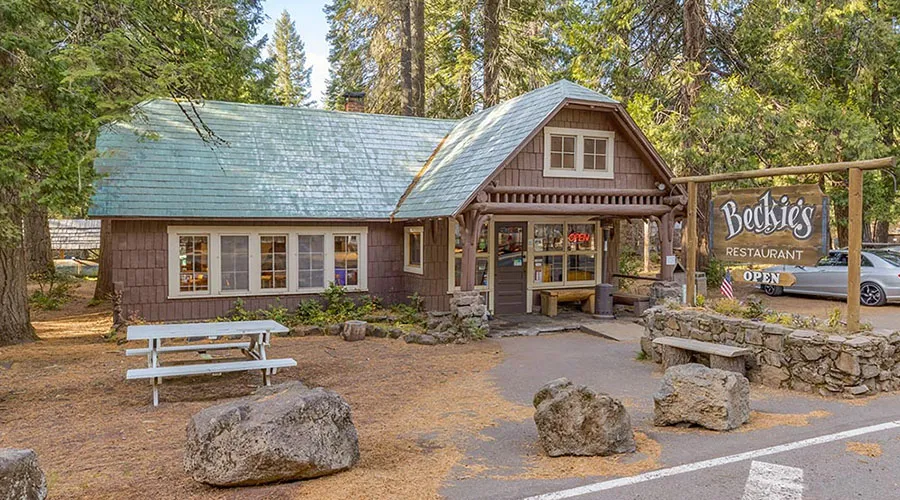
Dining
Dining options within Crater Lake National Park are limited, but visitors can find a few notable eateries and cafes to refuel and enjoy the park’s stunning vistas.
Crater Lake Lodge Dining Room
Experience a stunning view while having Breakfast, Lunch, or Dinner at the Crater Lake Lodge Dining Room. It is recommended to make dinner reservations in advance, up to seven days prior. Cocktails, small dishes, and appetizers are available in the Great Hall and Terrace during the break between Lunch and Dinner.
Address: Crater Lake Lodge, Crater Lake National Park, OR 97503
Open time:
- 07:30 AM – 09:30 AM
- 5:30 PM – 8:30 PM
- Prices range: $30 – $50
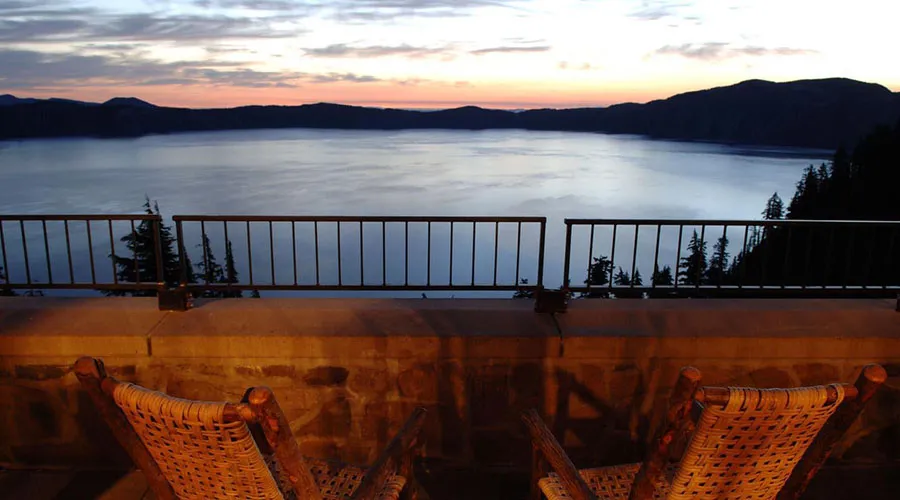
Annie Creek Restaurant
Annie Creek Restaurant at Mazama Village serves breakfast, lunch, and dinner with a focus on specialty sandwiches, pizza, and soups at Crater Lake.
Address: 1211 Avenue C, Crater Lake National Park, OR
Open time:
- 07:00 AM – 10:30 AM
- 11:00 AM – 9:30 PM
- Prices range: $10 – $20
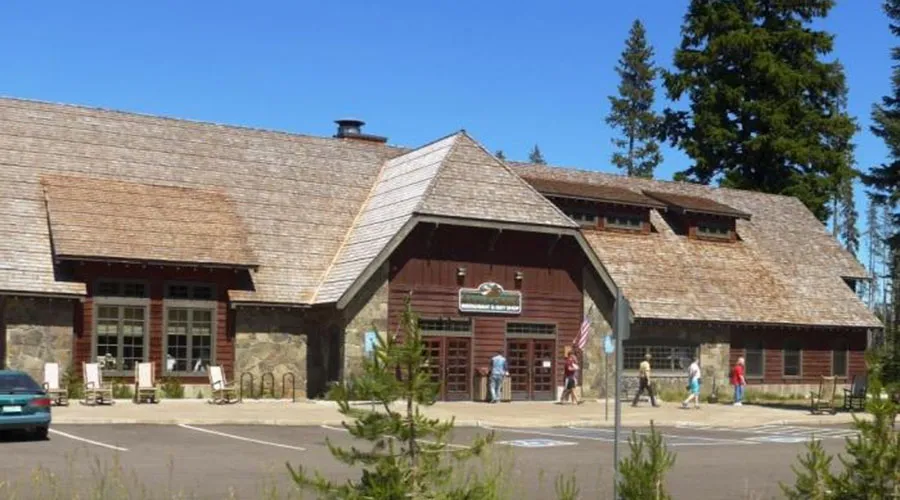
Planning Your Trip to Crater Lake National Park
Visiting Crater Lake National Park requires some advance planning to ensure a smooth and enjoyable experience.
Visiting Time
The peak months to visit Crater Lake are July, August, and September, when all the park’s roads, trails, and facilities are typically open.
May and June mark a transition period in the park from winter to summer. However, snow may still limit access to certain areas, which can be frustrating for visitors.
Despite the limitations, visiting Crater Lake in May and June is still worthwhile. It’s important to manage your expectations and be prepared for potential restrictions on activities and sights during these months.
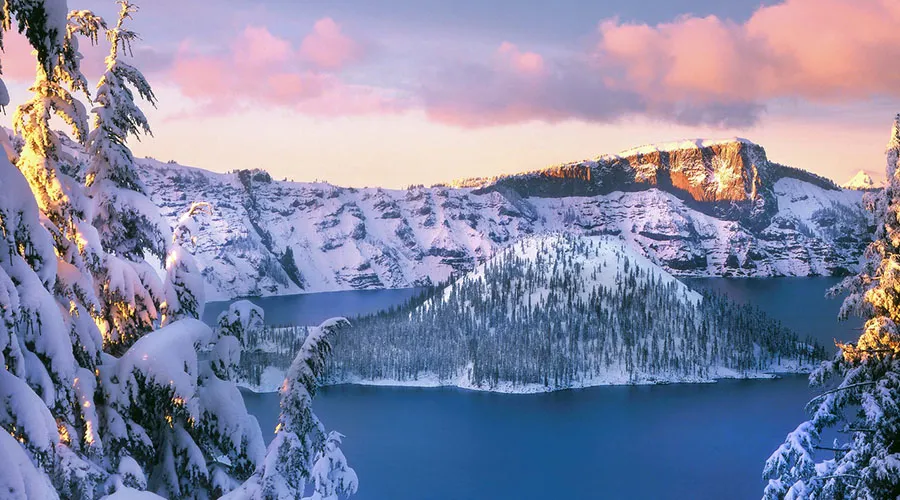
Transportation
Getting to Crater Lake National Park is relatively straightforward, but visitors should be aware of the park’s remote location and limited transportation options within the park itself.
The nearest major airport to Crater Lake National Park is Rogue Valley International-Medford Airport (MFR), located approximately 60 miles away. From the airport, visitors can rent a car or take a shuttle service to the park.
Once inside the park, the primary mode of transportation is by personal vehicle. The Rim Drive offers a scenic 33-mile loop around the lake, with numerous pullouts and viewpoints along the way. Visitors should note that the Rim Drive is closed to vehicular traffic during the winter months, but is open to skiing, snowshoeing, and other non-motorized activities.
Shuttle services are also available in the park during the summer months, providing transportation between various points of interest, including the visitor centers, lodges, and campgrounds.
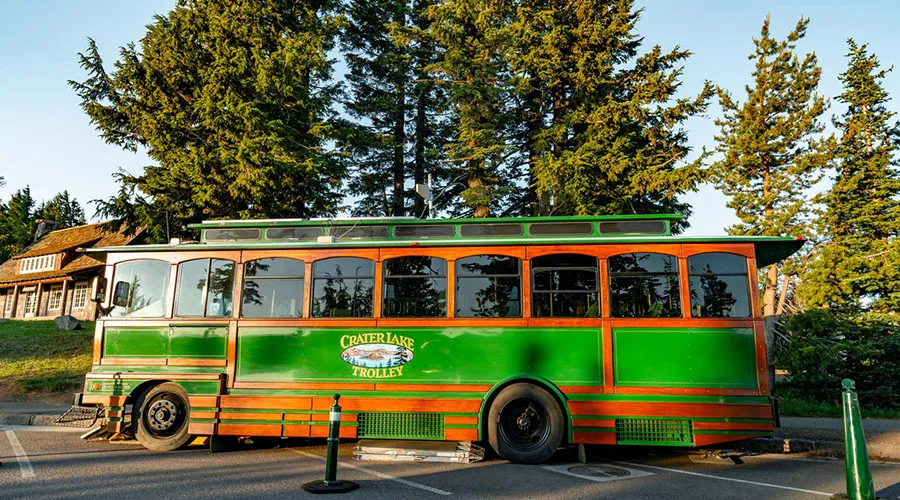
Conclusion
Crater Lake National Park is a natural wonder, a place where the awe-inspiring power of geology and the serene beauty of nature converge. From the breathtaking vistas along the Rim Drive to the exhilarating hikes and the opportunity to learn from knowledgeable park rangers, Crater Lake National Park invites you to immerse yourself in its stunning landscapes and reconnect with the natural world. So, plan your visit, pack your bags, and prepare to be awed by this magnificent gem of the Cascade Mountains.
Crater Lake National Park Photos
Q&A for Crater Lake National Park
Crater Lake was formed about 7,700 years ago when a massive volcanic eruption caused the collapse of Mount Mazama. The caldera was eventually filled with rainwater and snowmelt, creating the deep, clear blue lake we see today.
Yes, the park offers a variety of guided tours, including boat tours of the lake, ranger-led hikes, and educational programs that provide insights into the park’s natural and cultural history.
Some popular trails include the Cleetwood Cove Trail, which is the only trail that leads down to the lake shore, the Watchman Peak Trail for stunning views of the lake, and the Garfield Peak Trail for a challenging hike with panoramic views.
The park is home to a variety of wildlife, including black bears, elk, deer, marmots, and numerous bird species. Always keep a safe distance from wildlife and follow park guidelines to protect both yourself and the animals.
Pets are allowed in Crater Lake National Park but must be kept on a leash no longer than six feet at all times. Pets are restricted to developed areas, certain trails, and campgrounds. They are not allowed in the backcountry or on many park trails.
Must-see sights include the Rim Drive for scenic views, the historic Crater Lake Lodge, Wizard Island, which you can visit by boat tour, and the Pinnacles, which are unique volcanic spires located in the park’s southeastern corner.
Yes, Crater Lake Lodge offers historic accommodations with stunning views of the lake. The park also has cabins and rooms at the Mazama Village Motor Inn, providing more options for visitors looking to stay overnight in the park.
